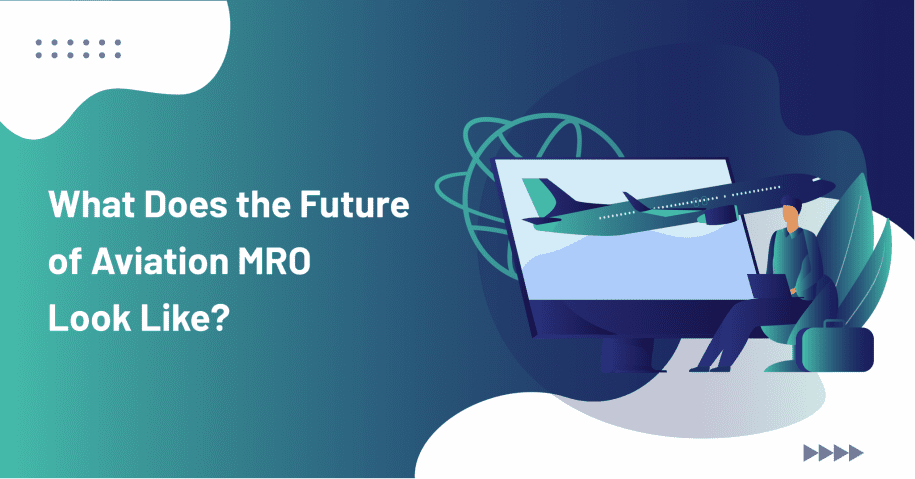MRO, i.e., “Maintenance, Repair and Overhaul”, is a crucial part of the aviation industry that ensures all aero planes are safe and in a working condition. While MRO teams worldwide are highly sophisticated and skilled, there is still a long way to go before they can leverage existing technology to the maximum degree. Most MRO teams are dependent on human labour rather than technology. Engineers are often overworked, leading to more errors compromising passenger and crew safety.
This article will discuss five ways technology can make MRO teams more efficient and cost-effective.
1. Artificial Intelligence and Machine Learning

It’s no secret that AI and ML have come a long way. Nowadays, AI can drive cars, write novels and provide customer support. So, it’s not surprising that this emerging technology can also be applied in MRO. Currently, there are too many variables associated with flight safety and maintenance, making MRO teams uncertain as to the best course of action. However, the on-flight data generated by aeroplanes can now be analysed to predict patterns and make decisions based on those patterns. This is where AI comes in. Humans can’t analyse such large datasets; however, AI can do so in a highly time-sensitive and cost-effective manner. Once MRO teams deploy AI for data analysis, they can act faster and make decisions with the help of “predictive maintenance.” Predictive maintenance allows AI to use maintenance logs and sensor data to detect possible technical problems in advance.
Further, Natural Language Processing (NLP) can also help identify recurring defects in the aircraft and match them to specific parts. This is done using the metadata of each aircraft, such as the serial numbers of the parts and the descriptions of various components.
2. Blockchain
We’ve all heard of blockchain in a cryptocurrency-related context. However, this technology can find more use-cases, including “record-keeping.” MRO teams generate a lot of data which needs to be kept secure. Blockchain technology assists in this process by allowing the data stored to be viewed only by those with a key. What makes this technology ideal is that it is cost-effective and requires minimal maintenance.
MRO teams can keep track of mechanical parts, leases, inventory, digital twinning, supply chain, repairs, etc., through blockchain. This will help the teams access and enter data more quickly.
Companies are yet to fully release such technology for application in the aviation industry; however, the work is already underway. Soon, MRO teams will be wondering how they got their job done without the help of blockchain.
3. Augmented Reality
In today’s world, augmented reality is experienced through glasses or eyewear, which can provide additional data to the viewer about what they’re seeing. Its use is also gaining popularity in the aviation industry, where MRO professionals are being trained with AR in aircraft maintenance.
Augmented reality can be used to visualise virtual 3D models of aeroplanes that MRO teams will be repairing, thus eliminating the need for expensive physical props. Additionally, they can all view the same model, which will help facilitate teamwork.
Augmented reality has already started being used in aviation training camps in Europe, and the technology may soon arrive in India as well.
4. Aircraft Maintenance Software
Aviation maintenance software refers to software that has been specifically developed to cater to issues in the MRO industry. India has already been exploring and deploying this software to help automate processes and make them more convenient for professionals.
Aircraft maintenance software can assign tasks to team members, keep track of various projects, facilitate communication within the team, file service requests, perform inventory optimisation, and more. This end-to-end solution is crucial for making MRO teams much more efficient.
Further, in the future, such software can be integrated with AI and ML capabilities as well. This would make it an indispensable tool for MRO teams which will help them across all internal processes.
Cloud-based aircraft maintenance software already exists and is used in aviation industries worldwide. However, there is still a lot of scope for improvement since the technology is in its nascency.
5. Robotics

Robotics is yet to find widespread application in any industry globally, but it holds the most potential. In the aviation industry, robots can be used to take on tasks that would otherwise jeopardise the safety of humans.
In MRO, robots could potentially be made to inspect components in an aircraft that are difficult for humans to access. They could also help with single-part repairs that require a lot of precision. Further, robots can also be used for carbon fibre machining, a highly demanding and strenuous task and other effective MRO activities.
Wrapping up
Overall, the future of aviation MRO looks exciting. Emerging technology can find many applications in this industry and transform its processes. While MRO currently runs almost entirely on human labour, technology can make MRO much more efficient and even safer in the future.
We hope you have found this article insightful and helpful.


Leave a Reply